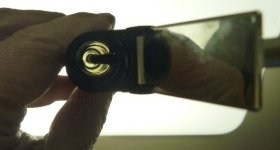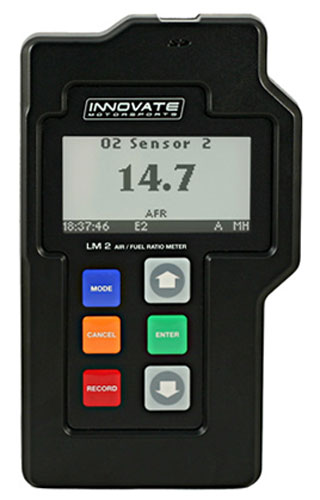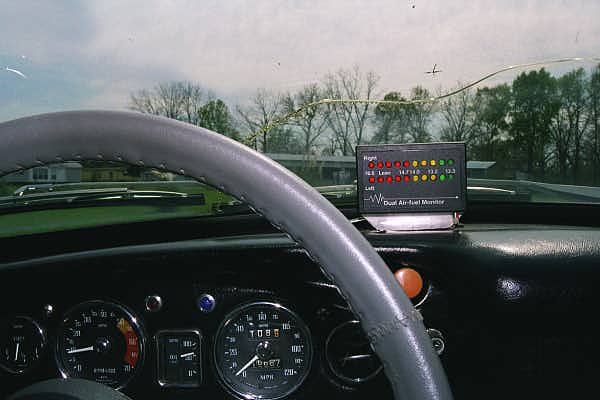The Innovate is handy and I was fortunate to have a friend that loaned me his to tne my Porsche. His was the previous generation to yours. I used it with some success using a welded bung in the 911. The Bosch sensor I used was brand new and was quite finicky, I thought. I studied analyzers a little bit last year and came to the conclusion that the most reliable and accurate was the NTK and I bought that one:
https://www.amazon.com/gp/product/B00M9LTZVS/ref=oh_aui_detailpage_o05_s00?ie=UTF8&psc=1
Only problem is that it is not a data collector, although you can make it one with a laptop. I have decided to make it a permanent mount in my 911, with a gauge that replaced the clock. Easily reversible.
I have read that the ideal spot is within 12" of the header or manifold, but you should mount the sensor perpendicular to the flow (this is automatic with a bung).
But what about the clamp as you have suggested which is parallel to the flow and not near the manifold? Can you still get accurate readings that way?
That wouldn't be my first choice, but I expect with an effort to get the sensor at least a foot into the pipe, you'd still get a reading.
I actually own an LM1 myself, only posting the link and pictures to the newer one above because it was the first dual channel I found in a quick search__I'm not necessarily endorsing it, and with any recommendation that I (or anyone else) makes, a smart individual should do all their own research before purchase anyway.
Visual aids:
A 2-channel narrowband meter I put in an MGBGT (with Buick 3.8 ltr V6) before the turn of the Century:
My Innovate LM2 wideband O2 (with logging, but you do need a computer to download and view the data):
A decade ago, perpendicular to flow mounting of the sensor (temporary, bung sealed with screw-in plug after testing a new supercharger installation on my '99 ///M Rdstr):
Getting back to the subject of tuning SUs, I always prefer the "pointers" to the uni-syn. For one, you don't have to remove the air-filters (HUGE plus on any Healey, but particularly a BJ8 with 2" carbs) nor grapple with holding it in place for a tight seal, and I never felt the readings were all that repeatable anyway__every time you moved the device from one carb to another, you got a different reading.
Trust me, there are uni-syns (a couple, I think) as well as Gunson's Carb-tune see-through spark plug, and every other gimmick tool in one of my roll-away drawers, I have tried them all at one time or another.
THE SU tool, Item B, are $10.00 cheaper than the uni-syn on Moss' site

The jet-centering "bit" (included) is vital to making an SU perform properly, and should be the first step. I usually check that first, then bring both (or all 3, as the case may be) jets flush with the bridge, then lower them all by 1-1/2 to 1-3/4 turns. That's usually a good place to get started from, and should allow the engine to run (this all of course, assumes the engine is already up to temperature__stinking hot__and the valves, points and timing have already been set...). There's no harm in slipping a small depth-measuring rule down there, to see if the same number of turns did in fact lower the jets equally (piston tops off__BUT NEVER MIXED UP__for these checks).
Now, if you really want to get serious about balancing carbs...

 Hi Guest!
Hi Guest!

 smilie in place of the real @
smilie in place of the real @
 Pretty Please - add it to our Events forum(s) and add to the calendar! >>
Pretty Please - add it to our Events forum(s) and add to the calendar! >> 










